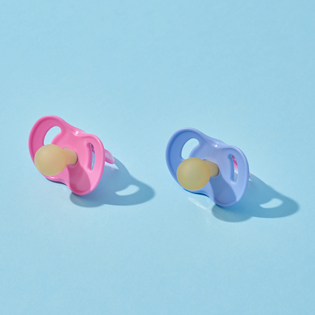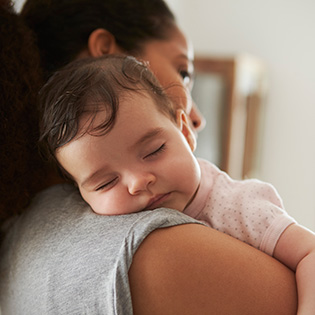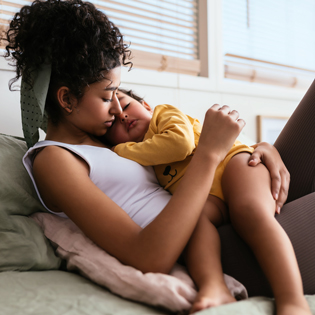You’ve adored that button nose since the day he was born and now that he’s a toddler, he’s ready to discover what the fuss is all about. The body-parts game (“Where’s your nose? There it is!”) is a blast for babies — but it gets even better when your older tot starts to point out his sniffer to you himself.
Learning body parts continues from his nose to his toes — and so on! Check out the reasons why learning each of the body parts helps with your child’s language development, plus some great ways to make learning the names of his sweet limbs and little elbows a whole lotta fun.
When can you teach children to identify body parts?
There's no "right" time to teach body parts — and no reason why you can't start pointing out body parts when talking to even the youngest babies. But just after his first birthday or between 13 to 15 months is a great time to focus on teaching body part names to your new toddler.
By 18 months, most children can point to at least one body part when named, and by age 2, your toddler will be capable of naming many different body parts.
When teaching kids about body parts, facial features are a great place to start, since your toddler will likely be able to point them out first. Why? He probably often puts his hands on your face and his own, and you probably already name those features as he touches them (saying “mouth” whenever those little fingers graze your lips, for example).
Why is it important for children to learn about body parts?
Pointing to and eventually naming body parts will help your child reach an important language development milestone. Plus, simply repeating the names of the body parts you’re teaching helps him understand where his own mouth is, even if he can’t yet say “mouth.”
Read This Next
Be sure to explain what each body part does as he’s learning: “Eyes help us see,” or “Ears help us hear.” This will reinforce the differences between body parts and make them easier for your toddler to tell them apart.
How to teach children to identify body parts
Explaining body parts to a child is as easy as playing games, singing songs and washing up in the bathtub.
Here are a few fun ways to work body part names into everyday activities:
- Make up a song. This little ditty can get you started (and you probably already know the tune): “This is the way we touch our nose, touch our nose, touch our nose, this is the way we touch our nose, so early in the morning.” Then replace “nose” with “chin” and then “elbow.”
- Sing a classic. You can always go with a classic like “Head, Shoulders, Knees and Toes,” or “If You’re Happy and Your Know It, Clap Your Hands!” The second one continues with feet stomping and other verses.
- Read all about it. Many children's books feature body parts, so pick your favorite author and go to town.
- Double the fun. Ask your child to show you his fingers or his ears, then ask him to point out yours. He'll get a giggle from the give-and-take and from showing off the parts he knows.
- Channel your inner artist. Trace your child's hand or foot on a piece of paper, then identify body parts — like the thumb or pinky toe — together. You can also draw the outline of a face or body and fill in the features or limbs as you name them.
- Try a mirror. Point to the reflection of your child's body parts in a childproof mirror as you name each one. Giving your toddler a variety of ways to practice identifying body parts will make learning their names more fun for you both.
- Count the parts. An older toddler will start to learn numbers — and counting his body parts (two ears, 10 toes) is an excellent way to hone both skills.
- Name them in the water. Swimming, in the bath or when it’s time to get dressed — all are ideal moments to label his feet (when putting on shoes) or back (while washing it).
- Quiz him. Play this game with an older toddler: Ask him which body part helps him run, and wait for him to show you his legs or feet. Then ask which one helps him talk, and pause for him to point to his mouth. If he needs a hint, point to the part and let him name it.
- Get physical. Any game that lets toddlers burn energy is a good choice. So, try some Simon Says with body-based directions ("Simon says, wiggle your fingers"), or do the hokey-pokey but keep it simple (say “Put your hand in” and save left and right for later).
As he learns the names of his legs, arms, belly and more, his body awareness will skyrocket, along with his vocabulary. Very soon, he’ll be able to say, “Knees!” instead of just identifying body parts by pointing — and that’s a great reason to clap hands and stomp feet.











































 Trending On What to Expect
Trending On What to Expect





